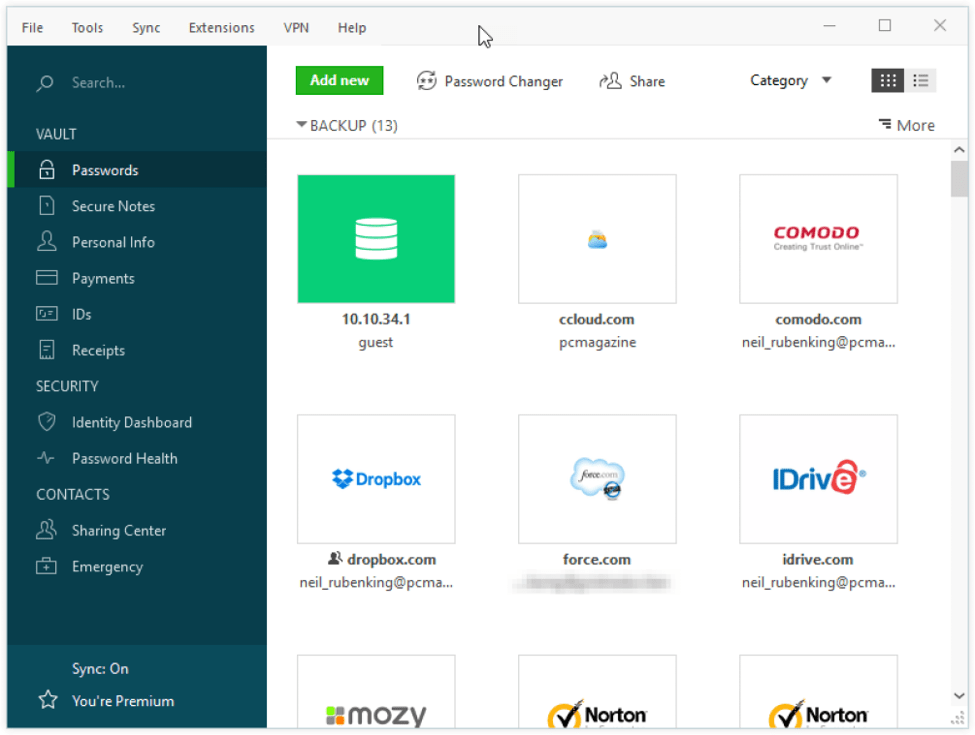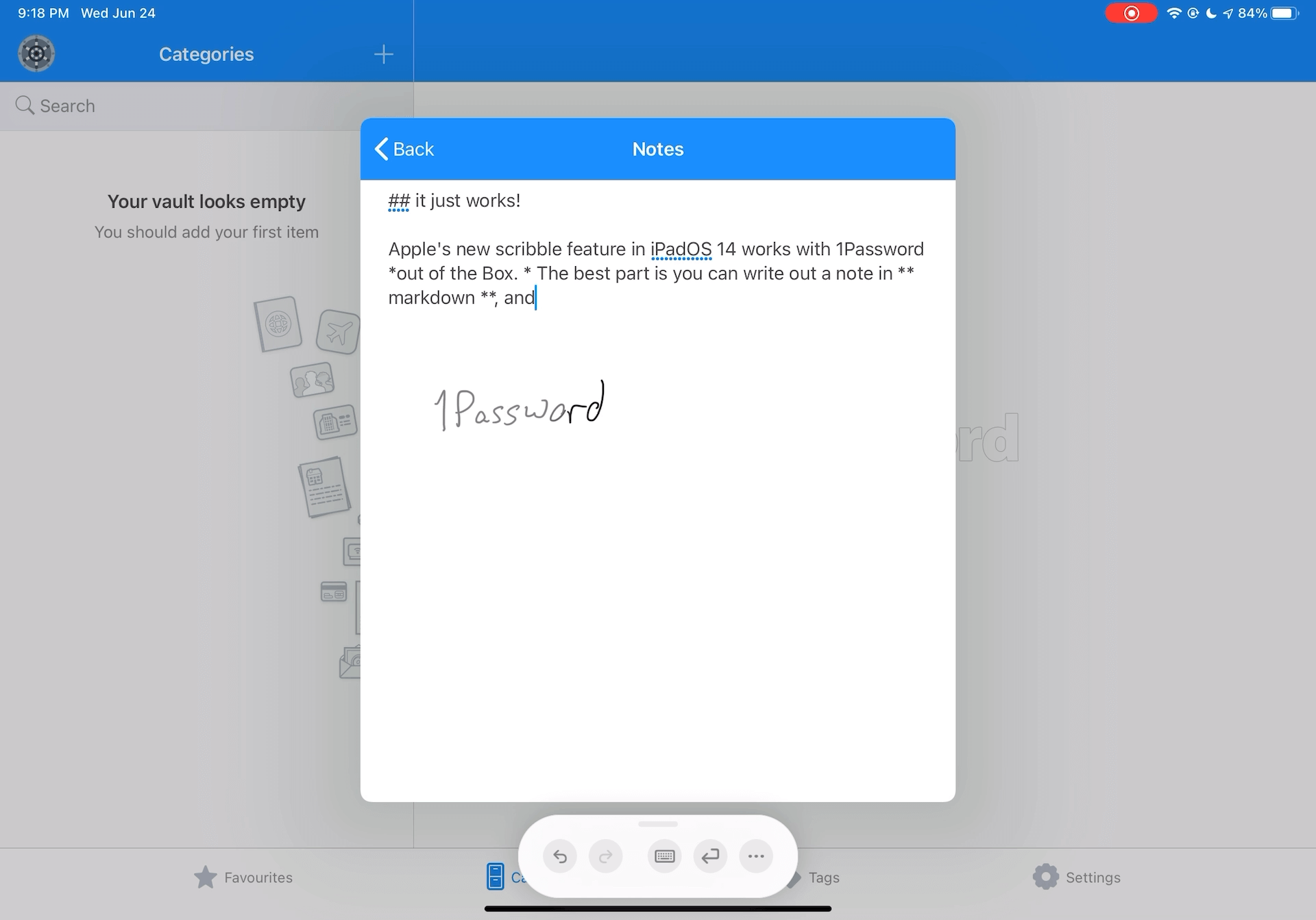1password 2020
After you install the 1Password apps, you can start using 1Password in your browser to automatically save and fill passwords on all the sites you visit on the web. But the most important thing to do is to use 1Password to change your passwords and make them stronger. Now that you have everything set up, you can get started on that now!
About PBKDF2
Learn how to revert to a previous version of an item or restore a deleted item. With a 1Password membership, 1Password saves previous versions of items every time you make changes, so you can undo your changes.When you empty the Trash, items in the Trash are archived, so you can restore them. If you're in the market for a password manager app, you've probably heard of 1Password. In this review, I cover the pros and cons, show you the apps and disc.
Your Master Password keeps your 1Password data safe. If someone gets ahold of your data, your Master Password is all that is stopping them from decrypting it.

Password-Based Key Derivation Function 2 (PBKDF2) makes it harder for someone to determine your Master Password by making repeated guesses in a brute force attack. 1Password uses PBKDF2 in the process of deriving encryption keys from your Master Password. PBKDF2 requires many computations to get from the Master Password to the key. Anyone trying to automatically guess a Master Password has to perform those same calculations.
PBKDF2 prevents password cracking tools from making optimal use of graphics processing units (GPUs), thus reducing guess rates from hundreds of thousands of guesses per second to less than a few tens of thousands of guesses per second.
How 1Password uses PBKDF2
1Password has always used PBKDF2, but the implementation is different depending on whether you use a 1Password account or a standalone vault.
1Password accounts
1Password accounts use PBKDF2-HMAC-SHA256 for key derivation. All accounts are created using 100,000 iterations.
However, password cracking attempts are effectively rendered impossible because your Master Password is combined with your Secret Key which is only on your own devices. A good Master Password is still needed to protect you from an attacker who acquires your encrypted 1Password data from your own device. Learn how to choose a good Master Password.
Learn more about the key derivation process in 1Password Security Design White Paper .
OPVault
OPVault uses PBKDF2-HMAC-SHA512 for key derivation. The number of iterations depends on the processing power of your machine and is calibrated when you create a vault or change its Master Password. The minimum number of iterations is 10,000 but may be much higher.
Learn more about the derivation process in OPVault Design.

Agile Keychain
The retired Agile Keychain format uses PBKDF2-HMAC-SHA1 for key derivation. The number of iterations depends on the version of 1Password used to create the vault and the processing power of the machine where it was created.
History of PBKDF2 in 1Password
- 1Password introduced the Agile Keychain format with PBKDF2-HMAC-SHA1 in Autumn 2007.
- 1Password for Mac 2.5.0 (October 2007) – 3.8.10: Keychains created with 1,000 PBKDF2 iterations.
- 1Password for Windows 1.0.0.36 (April 2010) – 1.0.9.296: Keychains created with 1,000 PBKDF2 iterations.
- 1Password for Mac 3.9 (September 2011): All versions of 1Password for Mac from the Mac App Store calibrate the number of PBKDF2 iterations on initial setup and on Master Password change. A minimum of 10,000 iterations is used.
- 1Password for Mac 3.8.11 (December 2011) – 3.8.20: Keychains created with 10,000 PBKDF2 iterations. Changing the Master Password did not change iterations.
- 1Password for Windows 1.0.9.299 (October 2012) – 1Password 1.0.9.327: Keychains created with 10,000 PBKDF2 iterations. Master Password change did not increase number of iterations.
- 1Password for Mac 3.8.21 (April 2013): Keychains created with 10,000 PBKDF2 iterations. On a Master Password change, iterations will be increased from 1,000 to 10,000 if necessary.
- 1Password for Mac 4 (October, 2013) will still create Agile Keychain format data under some circumstances. For both OPVault and Agile Keychain it will calibrate the number of PBKDF2 iteration on initial setup and on Master Password change. A minimum of 10,000 iterations is used.
- 1Password for Mac 4.2 (March 2014): Keychains created with a minimum of 25,000 iterations and a maximum of 100,000. On a Master Password change, iterations will be re-calibrated.
- 1Password for Mac 5 (October 2014): Keychains created with a minimum of 40,000 iterations and a maximum of 100,000. On Master Password change, iterations will be re-calibrated.
- 1Password for Windows 4.1 (November 2014) Keychains created with 40,000 iterations.
- 1Password Accounts (February 2016) All accounts are created using 100,000 iterations.
- 1Password for Windows 6 (September 2016) Accounts are created with 100,000 iterations.
Get help
Depending on the number of PBKDF2 iterations and the power of the device you’re using, there may be a small, but noticeable, delay when unlocking a vault on some systems.
Learn more
Set up the command-line tool
To install the 1Password command-line tool:
Download the tool for your platform and architecture. You can verify its authenticity:
Mac:Verify the digital signature of the .pkg installer.
Windows/Linux: Use GnuPG and the .sig file included in the download:
Move
opto/usr/local/bin, or another directory in your $PATH.To verify the installation, check the version number:
Get started with the command-line tool
The first time you use the 1Password command-line tool, you’ll need to enter your sign-in address and email address:
Then enter your Secret Key and Master Password.
After you sign in the first time, you can sign in again using your account shorthand, which is your sign-in address subdomain. op signin will prompt you for your Master Password and output a command that can save your session token to an environment variable:
Hyphens (-) in a subdomain will be changed to an underscore (_).
To set the environment variable, run the export command manually, or use eval to set it automatically:
1password Thanksgiving 2020
Now that you have a session token, you can start using the tool. For example, to show all the items in your account:
Session tokens expire after 30 minutes of inactivity, after which you’ll need to sign in again.

Learn more
You can use the tool to work with users, vaults, and items. For example, here’s how to upload a document to your Private vault:
To see a list of all the items in your Shared vault:
The output will show the UUIDs of the items. To get the details of an item:
1password Review 2020
You can use names or UUIDs in commands that take any user, vault, or item as an argument. Use UUIDs because they’ll never change, so you can be sure you’re always referring to the same object. It’s also faster and more efficient.
You can get details of just the fields you want. For one field, the tool returns a simple string:
For multiple fields, specify them in a comma-separated list. The tool returns a JSON object:
Parse and manipulate JSON output with jq
Every op command outputs in one of two formats: a simple string, like a UUID, or JSON. To parse and manipulate JSON output, we recommend the command-line tool jq.
To use jq to parse a Login item called “WestJet” and retrieve the password:
To use jq to manipulate a Login item template, set the first field value to “my secret”, and save the item in your Private vault:
Get help
To check for updates to the 1Password command-line tool:

If a newer version is available, the tool can download it for you.
1password Vs Dashlane 2020
You can see a list of all commands with op --help, or learn about a specific command with op <command> --help.
